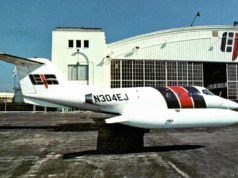Business aviation is not a particularly complex industry. Yes, airframe, engine, and avionics technology have improved continually since the Wright Brothers first flew. But the basic mission — getting you from Point A to Point B as quickly and safely as possible — has not changed since 1903.
When I began in the industry in 1972, there were fewer than a dozen makes and models of business turbine aircraft. More than 70% of the 300 total deliveries were in North America. Only 24 were large-cabin, long-range jets.
Today, there are more than 145 models, ranging from the original small cabin Learjet, to the latest large-cabin, long-range offerings from Gulfstream, Falcon, Bombardier, Embraer, Boeing, and Airbus. This year will close with slightly more than 700 jet deliveries: better than 2013 but nowhere near the 1,313 new aircraft delivered in 2008. More than 300 jets delivered in 2014 will be large-cabin, long-range aircraft. Only about half will be delivered in North America.
The evolution of the world’s fleet composition mirrors the changing world economy. A six-passenger aircraft with a 1200-mile range, while perfectly satisfactory for domestic use, no longer is sufficient to serve today’s international traveler.
That message was heard during last month’s three-day National Business Aviation Association (NBAA) convention in Orlando, the 67th such gathering of aviation professionals. Some 26,000 assembled from all over the world, meeting with more than 1,000 exhibitors, viewing almost 100 new and preowned aircraft on the static display, and attending dozens of educational sessions to ensure that your travel aboard business aircraft is as safe and efficient as possible.
I had the honor of moderating a standing-room-only panel on aircraft values, where the experts on the dais — Mike Dwyer of Guardian Jet, Tony Kioussis of Asset Insight, George Kleros of Jet Support Services, and Joe Zulueta of Aeronautical Systems — shared their insights on the current and near term market:
- Aircraft values no longer rise and fall with the Dow; they now are decoupled from the stock market.
- The preowned aircraft inventory sale is static: for every aircraft sold, another is listed, and prices recently have dropped 8%.
- The cost of coming mandated upgrades, with changes in the service support networks, may make older aircraft obsolete (See: “Will You Be the Last Owner of Your Aircraft?”).
- The large-cabin, long-range segment remains strong.
- Original Equipment Manufacturer (OEM) emphasis on customer service and after-sale support continues to rise.
While aircraft sales may not mirror the market, flight activity does. With every commercial airline consolidation or schedule cutback, business aircraft travel becomes more valuable to owners and charter users like you. BAA
Publisher of Business Aviation Advisor, has nearly 50 years in business aviation including executive positions at aircraft management/charter and ground services companies. He is a past director of the NATA and Corporate Angel Network.





